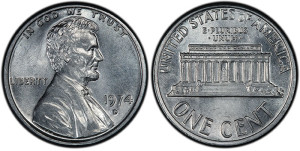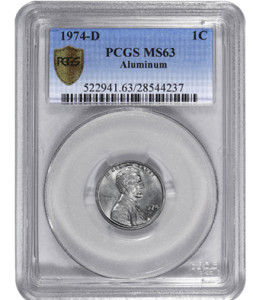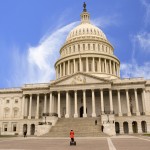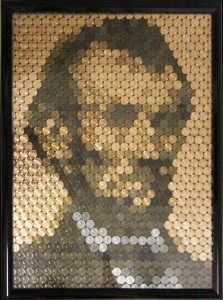US Mint Claims 1974-D Aluminum Cent
 photo courtesy of PCGS.com
photo courtesy of PCGS.comThe saga of one of the most mythical of US coins ended yesterday, when the only known example of an experimental aluminum cent was returned to US Mint authorities. The 1974-D aluminum cent was never authorized to be struck. and was not even known to exist until a specimen was discovered by a La Jolla, CA coin shop in 2013.
The transfer of the legendary penny to US Mint Police ended years of litigation between the government and the two men who discovered the coin. This is only the third 1974 aluminum cent known, and the only one bearing the Denver mintmark. Mint officials said that the coin, considered "a valuable historic heritage asset" will be publicly displayed once a venue is determined.
In the lawsuit brought by the government to recover the coin, it was held the coin was minted without permission and unlawfully removed without permission from the Mint. “This result ends the litigation successfully and returns the subject piece to its rightful owner, the United States Mint. It also vindicates the Government’s position that items made at United States Mint facilities but not lawfully issued, or otherwise lawfully disposed of, remain Government property and are not souvenirs that government employees can merely remove and pass down to their heirs,” said U.S. Attorney Duffy.
This was an important case, as it builds on the Mint's position in another famous coin case, the 1933 Langbord Double Eagles. While no criminal intent is alleged in the case of the 1974-D aluminum cent, the fact remains that it was removed from the Denver Mint without authorization.
The Story of the 1974-D Aluminum Cent
The 1974-D aluminum cent was not supposed to exist at all. All 1.4 million official samples of the experimental coin were struck in Philadelphia during the effort to replace the regular copper Lincoln cent. When Congress unexpectedly decided against the change, the samples given to Congressmen and Senators were gathered up and melted, along with the rest of the production run. Only one aluminum cent was retained, at the Smithsonian.
Apparently though, new dies and blanks for the aluminum cent had already been sent to the Denver Mint. Legend has it that ten or so 1974-D aluminum cents were struck on the midnight shift at the Denver Mint, using a normal coin press. The samples were then forwarded to US Mint headquarters in Washington, DC as evidence that the dies were working properly.
 Photo courtesy of PCGS.com
Photo courtesy of PCGS.comIn September 2013, a California real estate agent sold a plastic bag of loose coins to La Jolla Coin Shop. The man, Randy Lawrence, had recently moved to California from Denver, where his late father Harry had been Deputy Superintendent of the Denver Mint. When his father passed away in 1980, Randy inherited the bag of coins, which were mementos Harry had collected during his career at the Mint. Randy Lawrence said that his father had been given the aluminum cent at his retirement party in 1979.
Michael McConnell, the owner of the La Jolla Coin Shop, initially thought it was simply a Lincoln cent that had been struck on the wrong planchet. But the more he thought about it, the more he wondered if there was something more to the coin. On the advice of Professional Numismatists Guild legal counsel, whose opinion was that the coin was legal to own, he submitted the coin to leading coin authentication service PCGS. On January 28, 2014, PCGS announced that the coin was indeed a genuine 1974-D aluminum cent, and graded it as Mint State 63.
McConnell called Lawrence to tell him about his dad's old coin being a one of a kind sample, inviting him to share in the bounty. The two decided to consign the coin with Heritage Auctions, and donate half the proceeds after taxes to charities to help San Diego's homeless. While Heritage gave the estimated auction price of the1974-D aluminum cent at $250,000, other, unofficial estimates were as high as $2 million.

The news coverage of the discovery soon grabbed the attention of the US Mint, who declared the coin unreleased Federal property, and demanded its return. In response, McConnell and Lawrence asked the courts for a declaratory judgement that the coin belonged to them.
This prompted a counter-suit by the government. Litigation lasted until today, when the two plaintiffs gave up all rights to the coin, and released it to Assistant Chief of US Mint Police Bill Bailey and US Mint chief legal counsel Jean Gentry.
At no time was malice or criminal intent alleged on the part of the late Deputy Superintendent of the Denver Mint. Dr. Alan Goldman, who served as Interim Director of the US Mint and head of the 1973 aluminum cent project, said that Harry Lawrence would have never done anything he knew was illegal. "I knew Harry Lawrence very well and he was a straight shooter," Goldman said. "He would not have engineered this."
Once the court determined that since the striking of the 1974-D cent had never been authorized, and therefore belonged to the Mint, McConnell and the younger Lawrence agreed to drop any claim to the coin. The plans to put the coin on permanent display was part of the settlement. Lawrence said "I know that my father would be pleased that others will get to see and enjoy this rare piece in the US Mint collection for years to come."
The Toven 1974 Aluminum Cent
While US Mint records show that 14 of the more than 1.4 million 1974 aluminum cents are unaccounted for, only one has shown up in the wild. Its existence was first reported in 2001, and authenticated in 2005. It is known as the Toven Aluminum Cent.

Albert Toven was an officer in the US Capitol Police in 1974, as the "copper or aluminum" debate raged over the fate of the Lincoln cent. According to Toven, a Congressman who had just attended a meeting on the production of the aluminum cent dropped a coin on the floor of the Rayburn Office Building. Toven, thinking it was a dime, picked it up to give back to the Congressman, but was told to keep it. When he got home, he saw that it was a penny, and not a dime. He kept it among his belongings, not realizing the value, until his death in 1999.
What Makes An Aluminum Lincoln Legal?
Since the US Mint has never attempted to seize the Toven 1974 aluminum cents, PNG legal counsel Armen Vartian had every reason to advise that the 1974-D aluminum cent was just as legal to own. While not explicitly covered in the recent litigation, perhaps the fact that Toven was given the cent by a Congressman, who had received it from US Mint officials, could be construed as an "authorized release" of the coin.
Vartian worries that the strict interpretation of legality on non-circulating samples arrived at for the Lawrence 1974-D aluminum cent now exposes coin patterns and other "unreleased for circulation" coins, some of which have been traded back and forth since the 1800s, are now exposed to government seizure.
While we are not lawyers, it seems that Harry Lawrence being given the 1974-D aluminum cent as a retirement gift would give it the same legality as the Toven Specimen enjoys. Both were given away by government officials.
And at the end of the day, the problem that spawned the 1974 aluminum cent experiment 43 years ago still remains: it costs more than 1 cent to make a cent (1.4¢, according to the US Mint's 2015 Annual Report to Congress.)

The opinions and forecasts herein are provided solely for informational purposes, and should not be used or construed as an offer, solicitation, or recommendation to buy or sell any product

Steven Cochran
A published writer, Steven's coverage of precious metals goes beyond the daily news to explain how ancillary factors affect the market.
Steven specializes in market analysis with an emphasis on stocks, corporate bonds, and government debt.
